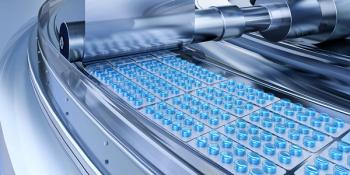
Continuous Manufacturing Eases Scale Up for Solid Dosage
Pharmaceutical Technology spoke with Bill Randolph, vice-president, Technical Services, Janssen Supply Chain, about some of the considerations for technology transfer of a continuous, solid-dosage manufacturing process and what he sees as the outlook for continuous manufacturing.
Continuous manufacturing can make scale-up and technology transfer easier in several ways. With some continuous process technologies, the same primary equipment can be used for both the smaller and larger scale, and the equipment is simply run longer to obtain the greater volume. Another advantage is that a set of experiments can be run more quickly on a continuous line than in a batch process, making it easier to define scale-up parameters. Pharmaceutical Technology spoke with Bill Randolph, vice-president, Technical Services, Janssen Supply Chain, about some of the considerations for technology transfer of a continuous, solid-dosage manufacturing process and what he sees as the outlook for continuous manufacturing.
Pilot- to commercial-scale transferPharmTech: What needs to be considered in a technology transfer from a pilot-scale site to a commercial-scale site when using a continuous solid-dosage manufacturing process?
Randolph: If the pilot and commercial operations are the same scale, the systems are 'mirrored' and equipment is directly transferable. Changes would only apply to local operational considerations, such as changes to finished product hold or bulk shipment.
In other situations, the same design of equipment is used at both sites but scale up is needed. For example, for a wet-granulation process where the pilot scale was a 25-kg/h line but the market volume requires a 50- or 100-kg/hr line, scale-up will be needed. The scale condition, particularly the screw configuration and wettability of the blend in the case of screw-granulation technology, needs to be tested in a technology-transfer study. Thermodynamic conditions on a segmented dryer also need to be tested, although thermodynamic and mass transfer equations can be used to establish scale equivalency.
Continuous processes like direct compression or dry granulation roller compaction do not require significant technology-transfer studies for increased line speeds. Areas that could require some level of development or confirmation in these cases, however, include changes in scale for feeders, blenders, granulators, compression, coaters, and process analytical technology (PAT)/in-process control.
The idea is to have an understanding of which equipment characteristics are most important (e.g., residence time distribution) and to have a good way of characterizing powders and their mixtures. The behavior of the product-specific materials must be characterized in the new set of feeders, blenders, and other equipment. There may also be a need for adjusting PAT chemometric models for a new dynamic environment. With this in hand, we can perform design of experiments on the line quickly, on a single continuous run, to nail down the design space, which will vary some from line to line.
For a scale-up or transfer onto a different design (including a blender, granulator, or dryers), assessments would be needed on differences in equipment trains and the complexity of the continuous manufacturing process.
Future of continuous solid-dosage manufacturingPharmTech: What role do you expect continuous solid-dosage manufacturing to play in the near/long-term?
Randolph: In the near-term, continuous manufacturing will foster more strategic collaboration between industry, academia, and healthcare agencies to establish the guidance, development processes, and science needed to implement proper operations at each manufacturing site. This collaboration will elicit alignment with the FDA to create regulatory pathways for the use of continuous manufacturing in pharmaceutical production.
Through the use of continuous manufacturing, products will be monitored for quality using real-time release testing, which will greatly reduce processing time and deliver products to patients sooner. It also allows for batch size flexibility by eliminating the need to discard an entire batch when a correction is needed.
In the long term, continuous manufacturing offers the potential for an enhanced ability to control manufacturing. Through the incorporation of PAT, manufacturers will have the ability to ensure product quality and improve knowledge management for lifecycle validation. Operational benefits could potentially include, for example, improved risk profile/commercial reliability, on-demand manufacturing, improved batch/process yields, and reduced investigations.
I believe the implementation of continuous manufacturing will lead to a mixed pharmaceutical production environment where some products are still developed and manufactured in batch process, while others transition from batch to continuous or from continuous to batch depending on market demand requirements and product lifecycle. There will also be more end-to-end continuous process implementation (from materials to packaging) and introduction of potential blockbuster new products directly using broad application of continuous manufacturing technologies.
Newsletter
Get the essential updates shaping the future of pharma manufacturing and compliance—subscribe today to Pharmaceutical Technology and never miss a breakthrough.





